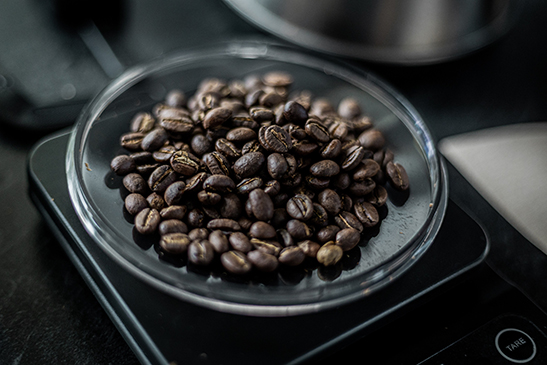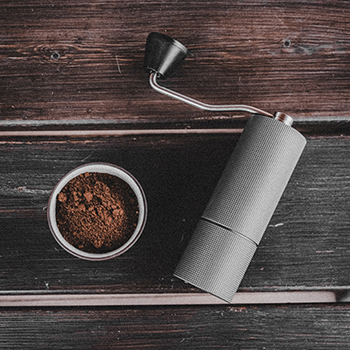The art of brewing the perfect cup of coffee is deeply influenced by the temperature of the water used. This seemingly simple factor plays a pivotal role in extracting the full flavor and aroma from coffee beans.
The best water temperature for coffee brewing typically ranges between 195°F to 205°F (90°C to 96°C). This range is crucial as it ensures the optimal extraction of coffee solubles, balancing acidity, sweetness, and bitterness in the final cup.
In this short article, we will discuss why water temperature matters in coffee brewing, the ideal water temperature and tips for achieving it.
If you want to master that perfect coffee using the correct water temperature, read on to learn more.
Why Water Temperature Matters in Coffee Brewing
The temperature of water used in brewing coffee is critical for proper extraction. Hot water helps in extracting various compounds from coffee grounds, including:
- Acids
- Oils
- Caffeine
Each of these compounds extracts at different rates, influencing the coffee’s overall flavor profile.
Using water that is too hot can lead to over-extraction, resulting in a bitter and astringent taste. Conversely, water that is too cold leads to under-extraction, producing a weak and overly acidic brew. Therefore, maintaining the right temperature is essential for a balanced and enjoyable cup of coffee.
A useful video giving a visual overview of the perfect water temperature for brewing coffee
The Ideal Water Temperature for Different Coffee Bean Types
It is the density and chemical composition of the beans, which vary with the roast level. It is this that dictates the ideal water temperature when brewing to allow desirable flavors to be efficiently extracted without any unwanted bitterness.
- Light roast beans, being denser, require slightly hotter water (around 206F-208F or 96C – 97.8C) for effective extraction of their unique flavors and acidity.
- Medium roast beans are the most versatile when it comes to brewing temperature. They generally do well with a temperature range of 92°C to 96°C (197°F to 205°F), which allows for a good balance of flavor extraction without over-extracting bitter components.
- Dark roast beans are less dense and slightly lower in caffeine and can be brewed with slightly cooler water (194F-200F or 90C-93C to enhance their rich and smooth taste.
- For single-origin beans, which are known for their unique and distinct flavors, a temperature range on the lower end (around 91C to 93C or 195F to 200F) is often recommended. This helps in extracting the unique flavors and aromas without overpowering them.
- For blended beans, the temperature can be adjusted based on the dominant bean type in the blend or the desired flavor profile. Generally, a middle range of around 92C to 94C (197F to 201F) works well.
- Specialty or Gourmet Beans often come with specific brewing instructions, including recommended water temperatures. It’s best to follow the roaster’s guidelines to achieve the best flavor profile.

Brewing Methods and Temperature Settings
The brewing method you use will also have an impact on the water temperature and to demonstrate this below is a table giving a general guide:
| Brewing method | Temperature setting |
|---|---|
| Pour-over and drip coffee | For pour-over and drip coffee, a temperature range of 91C to 96C (195F to 205F) is recommended. The range ensures proper extraction of flavors without making the coffee bitter. |
| French press | The French Press method works best with slightly cooler water, around 91C to 93C (195F to 200F). This temperature helps in extracting the flavors slowly and fully, giving a robust taste. |
| AeroPress | Unique among brewing methods, the AeroPress can produce excellent coffee even at lower temperatures, thanks to its pressure-based brewing process. Temperatures as low as 165F (74C) can still yield a well-extracted cup. This adaptability is showcased in various AeroPress Championship recipes. |
| Espresso | Espresso machines typically require water temperatures between 197F and 205F (92C to 96C), combining high temperature with pressure for a robust extraction. |
Practical Tips for Achieving the Perfect Temperature
Achieving the ideal water temperature for coffee brewing is an art that balances between precision and intuition. To ensure you are in the right range, a kitchen thermometer is an invaluable tool. It allows you to precisely measure the water temperature, ensuring it falls within the ideal range of 90C to 96C or 195F to 205F.
If a thermometer isn’t available, a simple yet effective method is to bring the water to a boil and then allow it to sit for about 30 seconds. The brief waiting period typically cools the water down to the desired temperature range.
One common mistake to avoid is using boiling water directly for brewing:
- Water at boiling temperature can scald the coffee grounds, leading to over-extraction and a resultant bitter taste.
- Water that is too cool can lead to under-extraction, producing a coffee that’s flat and sour.
The key is to find that sweet spot where the water is hot enough to extract the flavors effectively but not so hot that it damages the delicate compounds in the coffee.

The Role of Coffee Grind Size in Brewing
The grind size of coffee is a critical factor in the brewing process, particularly in its relationship with water temperature.
- Finer grinds, with their increased surface area, allow for quicker and more efficient extraction. However, this also means they are more susceptible to over-extraction if the water is too hot.
- Coarser grinds, with less surface area, require hotter water to extract effectively.
Finding the right balance between grind size and water temperature is a matter of experimentation. Each coffee type and brewing method may require slight adjustments to these variables.
For instance, a French press, which typically uses a coarser grind, might need slightly hotter water compared to an espresso, which uses a very fine grind.
Final Thoughts
Mastering coffee brewing is a journey of discovery and experimentation. Understanding how water temperature interacts with grind size and brewing method is crucial for creating the perfect cup of coffee. The best approach is to experiment with these variables, adjusting them to suit your taste preferences and the specific characteristics of the coffee you’re using.
Remember, the ultimate goal is to find that perfect balance that yields a cup of coffee that resonates with your personal taste. So, embrace the process of experimentation, and enjoy the journey to brewing excellence.
FAQs
In exploring the nuances of coffee brewing and water temperature, two common questions arise:
Does the water temperature affect the caffeine content?
While hotter water can potentially extract caffeine more efficiently, the actual difference in caffeine content between cups brewed at different temperatures is usually minimal. The taste and strength of the coffee are more significantly impacted by the temperature rather than the caffeine content.
Can I use boiling water for brewing coffee?
Using boiling water for brewing coffee is generally not recommended. Boiling water can cause over-extraction of the coffee grounds, leading to a bitter and unpleasant taste. It’s better to let the water cool slightly after boiling to reach the ideal brewing temperature.

Written by Robbie – Coffee Writer and Researcher at MyCoffeeBeanz.com
Robbie has over 15 years of extensive experience working in the coffee industry in marketing. As a native New Yorker he loves the hustle and bustle of a big city and enjoys nothing more than breaking up his busy day with trips to the nearest coffee shop for a double espresso. Find out more about Robbie
